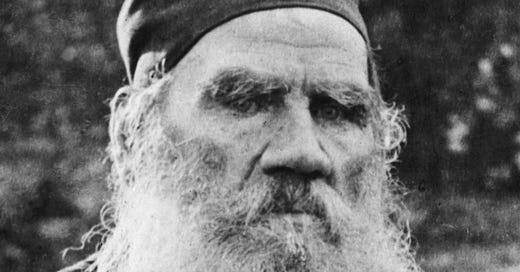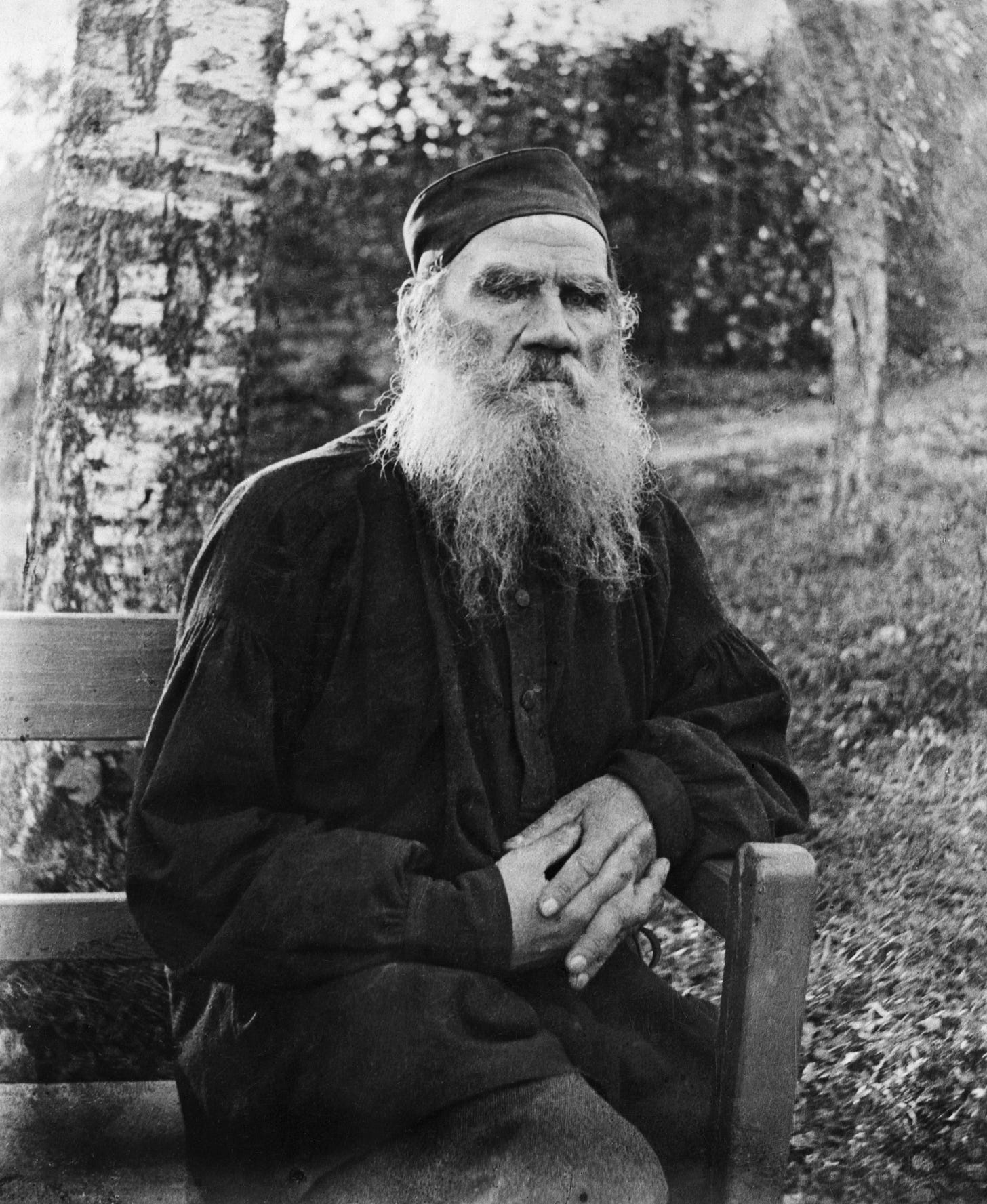Thank you again to all who stop by this space. You can come and go free of charge, so please…
A few years ago, I listened to an interview with one of my idols, Ursula Le Guin. She commented on the use of point of view in fiction and went on to say something fascinating—she felt that point of view in the era of the creative writing workshop was a relatively recent phenomenon that we had mistakenly come to accept as eternal; the result, to her ear, was a lot of writing that sounds and is presented the same. Le Guin pushed against contemporary “rules” and simply suggested we all reach back and start reading older books—say by Dickens or Virginia Woolf—and that these texts could open for writers new, creative, and productive approaches to point of view. Imagine, the old can inform the new! Spoiler: she’s right.
This takes me to Leo Tolstoy’s War and Peace. For a while now, War and Peace has ceased to be a book, having morphed into a symbol of size, heft, and for going on for way longer than one should. It has become encrusted in connotation. What are you doing? Writing War and Peace? I have heard the novel referred as one of the finest doorstops or as something too heavy for students to carry. You get the point.
So I decided to read War and Peace, and I just “finished” the journey. First, I did so to take Ms. Le Guin’s advice seriously (I also just read To the Lighthouse for the first time). Second, as I often read more than one book at a time, I would simply read twenty pages a day. That’s it. No expectations. No pressure of Oh my goodness I’m reading War and Peace. For a mere twenty pages a day I would join a different world and time and walk with the characters who lived there. Sometimes they fell in love. Sometimes they played courtship games and married. They divorced (sort of). They fought. They were wounded in inglorious ways that they pretended were heroic. Some lived and some died. Twenty pages a day I moved through the lives of people from early 19th century Russia and France; I got to listen to both Napolean and Alexander I on occasion; and I weaved in and out of the lives of Andrei, Natasha, Pierre, and Nikolai. But best of all, I got to spend time with Tolstoy, all because he doesn’t use point of view in the manner to which we’re most accustomed. He is a strong presence in the novel in a way that we would now discourage.
In War and Peace, Tolstoy comes as close to being a character as one can without naming himself. When referring to Russian war efforts he slides into the first-person plural, using the pronouns “we,” “us,” and “ours.” Crazy! As interludes from the lives of his characters, Tolstoy includes chapters of pure historical commentary: why the French failed to take Russia even after Moscow burned. Why Borodino was a victory for the Russians even while suffering more losses than the French. Why a particular Russian historical general was brilliant, while another is important and overlooked. And, incredibly, the novel concludes in a way I have never seen a work of fiction end: with a forty-page essay! It is written in Tolstoy’s voice, about the state of history as a discipline, what it needs, and why some historians are good and some are bad. Tolstoy, ahead of his time for sure, essentially calls for structuralism (such as that which Marx would provide) and an approach to history that is governed by certain laws, much like a science. In a dazzling closing metaphor, Tolstoy writes that history is at the point where it needs to make a revolutionary switch from the universe of Ptolemy to that of Copernicus. And then the novel ends. Nothing like it!
But what of the characters? When I flipped back from the end to see where the characters’ journey ends, the writing is both brilliantly structured and terrifying. Appropriately, and again against what I would consider a frowned upon technique in today’s stylistic world, the characters’ novel ends with a dream. Andrei’s son dreams of his father, and of course he cannot wait until he is of an age where he can rush off into war and surpass the exploits of his father… who didn’t have that many exploits and meets and end that I will not spoil. Again, Tolstoy could see then what we see now—the invisible structures of our world that should appear obvious, guiding us through ritualized performances that do very little advance who we are, personally or socially, whether they be in times of war or peace. I say this after coming home from the YMCA where most of the men were wearing workout clothing adorned with guns, skulls, violent logos, camouflage, and military sloganeering. War and peace is on my mind a lot these days.
Le Guin was right, of course, about point of view. Generously, I would say that War and Peace is third-person omniscient, but such a description would be insufficient. Some chapters deliver omniscience, some a limited view, others third-person objective, a few are epistolary, while other chapters double as essays with an implied first-person speaker who is Leo Tolstoy. War and Peace would not survive contemporary editorial scrutiny, with all its “point of view breaks” and lord knows Tolstoy wouldn’t have made it on Substack, with the continuous drumbeat for “less, less, less of your writing.” War and Peace is anything but less: it is an entire world and history bound in one book, and you can read it twenty pages at a time.
I’m done reading it now, but I’m also not. Tolstoy truly was a systems thinker. He could see how the invisible structures that lead populations into war are similar to those that govern those walking down the hallways of courtship and marriage and wealth; in other words, he could visualize acute similarities between the lives of men and women, not mere differences. It would be a mistake to read War and Peace and see the courtship and marital politics as traditional—they are anything but, especially when the reader is frequently asked to discern which parts of the novel are truly war and which are peace. I’ll never be finished reading this novel. Maybe, like the character Pierre, I’ll keep searching for that place or moment when I finally “belong” somewhere—in this case a stable interpretation—but I’m also okay if the search continues.
What’s next? Maybe Bleak House? Yes, but twenty pages at a time.





This is beautiful and so necessary for writers (students?) to read. Over Bleak House, if you're looking for the next infamously epic doorstopper, I'd recommend Les Miserables.
Great writing is always to be treasured and Tolstoy certainly gave us that.
Chuck, your own writing in "The Declining academic" is adept at informing and entertaining in what I'd suggest is a valid, carefully considered and articulate manner but 'non-academic' in its accessibility.
I commend your work and the thought you put into it and recommend it to others.
Thank you for sharing.
Take care. Stay safe. ☮️